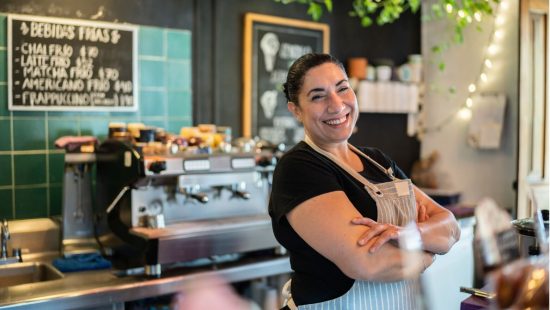Komal, led by Chef Fátima Juárez and her partner in life and business, Conrado Rivera, has earned her first Michelin star.
Mexican cuisine once again showcases the richness and variety that continues to captivate critics from the famed Michelin Guide.
Komal, led by Chef Fátima Juárez and her partner in life and business, Conrado Rivera, has earned her first Michelin star.
Here’s the Michelin review explaining the recognition:
“In the bustling Mercado Del Paloma, Chef Fátima Juárez runs this little stall specializing in corn. Heirloom varieties sourced from Mexico and nixtamalized in-house form the heart of the menu. A quesadilla lined with squash blossoms and sweet corn bound with melty quesillo earns top marks. Golden-fried plantain balls set in a smoky black mole are another accomplished winner. From tlacoyos topped with cactus to tacos filled with short rib, be liberal with the salsa for extra punch and power.”
Tamal tonto (a kind of tamal with homemade mole), turkey, and huauzontle. A dish made with cooked corn dough wrapped in leaves, then steamed, as is customary in various regions of Mexico.
After a year and a half of nixtamalizing corn and making masa in a tight backroom at the Michelin-starred Holbox, Chef Juárez and Rivera opened Komal Molino on September 25, 2024. Located in Mercado La Paloma, the restaurant is a love letter to the pre-Hispanic dishes Juárez grew up eating in Mexico City and Oaxaca—made with Indigenous corn sourced directly from farmers in Mexico and nixtamalized on-site.
Komal was born while Juárez and Rivera were still working at Holbox, when Chef Gilberto Cetina offered them a room in the back for Juárez to nixtamalize corn and turn it into masa.
“So at the same time Gilberto was our boss, he was our best customer,” Rivera said in a previous interview. “We created that relationship based on trust.”
Juárez distinctly remembers people coming up to her the first time she started processing corn to say that the smell brought them back to their own childhood memories. Once the masa side gig grew enough to become a sustainable business, Juárez and Rivera began to seriously consider taking the project out of the spare room and building a restaurant around it.








